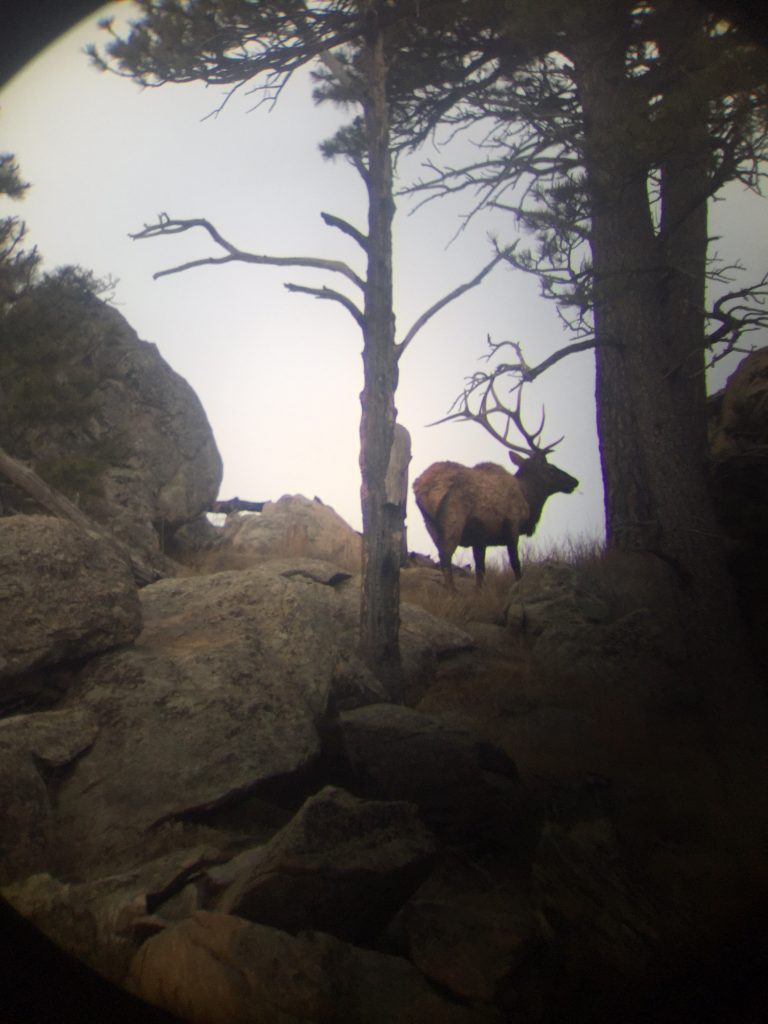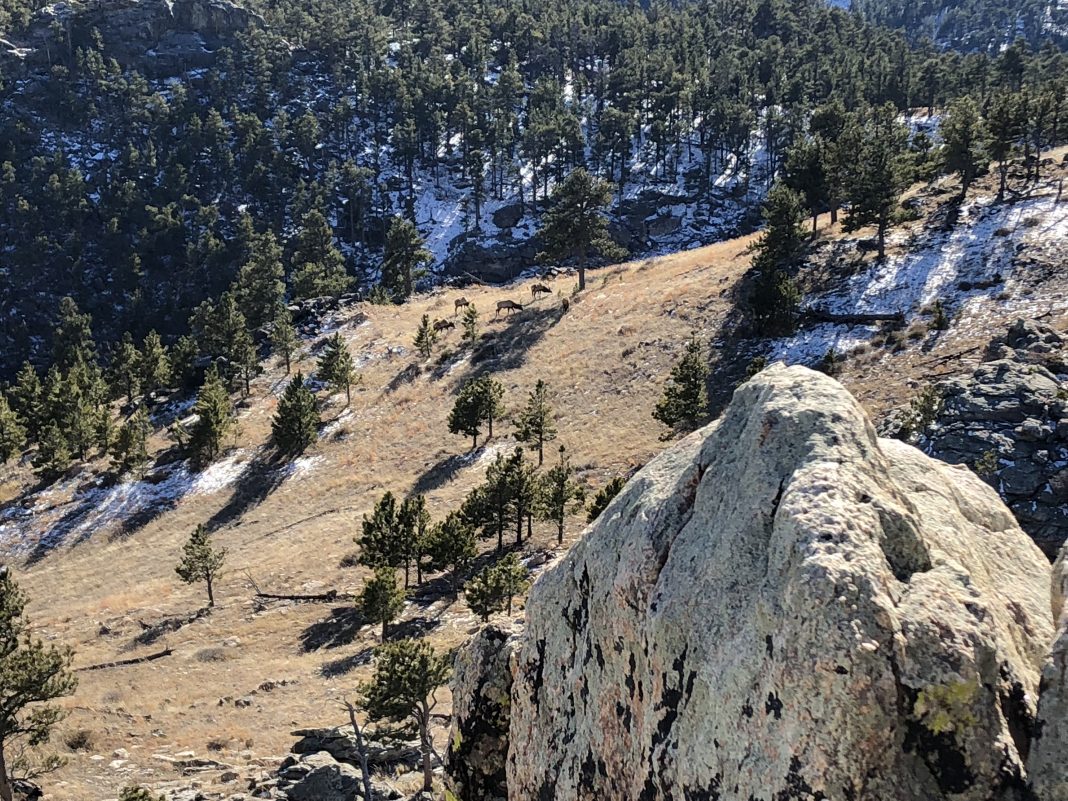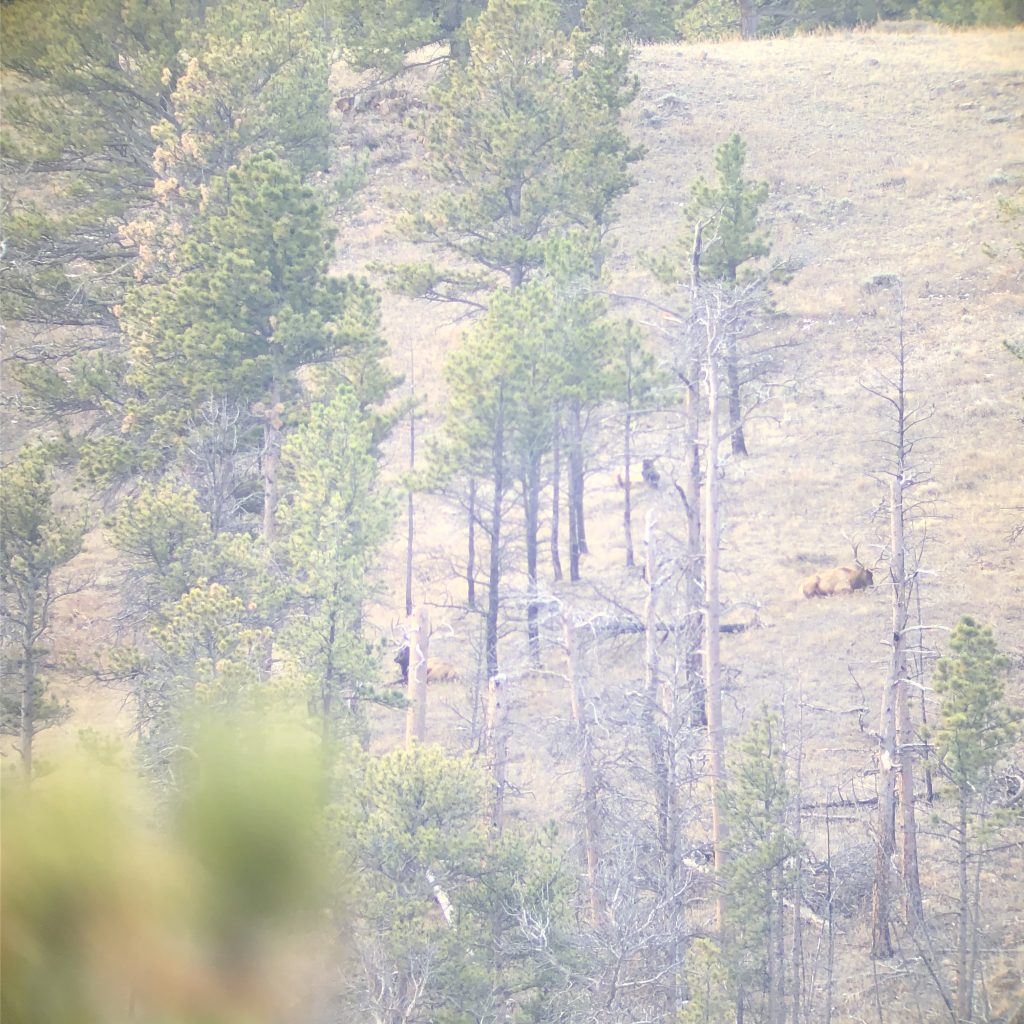Obviously, the pinnacle of Elk hunting is getting to hunt in the Rut and I am sure several other Elk Hunters will agree. I for one spend every day I can in September in the field The unfortunate part is most rifle elk hunts across the west occur after the rut is over, and that begs the question, where have all the bulls gone?
For me, there are 2 periods after the post rut that are very important for a hunter to understand. After nearly a solid month maybe longer of full-fledged fighting, chasing girls, beating up trees, and bugling on the side of the mountain, Bulls have no choice but to wear down. They are sore, tired, and beat up. Once the last cow has been bred they began to separate themselves from the party.
This first period I notice bull movement is very limited and sometimes they don’t move at all. Especially if the weather is unseasonably warm. They will utilize a small area where they have all their necessities close by. Seeking the topside of a leeward saddle with good cover, high enough that most the time it seems their backs are catching just a little wind and the rest of their bodies are just low enough to be out of the wind. I spend most of my time glassing these types of terrain features. I take into consideration air flow over that particular feature to isolate areas where I can pick apart to hopefully find a bedded bull.
If your in thick timber country you need to find small isolated parks near thick timbered edges where a mature bull can slip out and grab a bite and disappear within seconds, I always take into consideration air movement through the area, if elk can help it they want to bed and feed where they are always leeward on any particular slope or terrain feature if possible especially as winter begins to set in.
Later after the rut and once the bulls rest up and heal up there becomes a time where it is more about feeding and less about laying around. Normally the weather is starting to contribute more of an influence and bulls need to utilize different types of terrain. If there is snow on the ground they become increasingly selective about there whereabouts. I start focusing my efforts on small elevated parks where the wind typically can’t get into. Probably has some type of easterly or southern aspect, and If the temperatures are dropping these bulls may seek less cover and more sun throughout the day, out of the wind.
Bulls will travel a good distance to utilize different terrain features almost daily as the weather changes. If you locate a bedded bull one day while the wind is blowing and expect him to be near that same spot the next day when the wind has stopped there is a good chance he has moved on. If the snow starts to stack up they may have to start getting more exposed to windy features of the slope where excess snow has been moved off their feeding areas from the help of the wind.

More important than any terrain feature is weather. Not only for elk activity but also elk whereabouts. Snow, wind, and warm conditions can sometimes wreak havoc on country that normally yields elk post. Too much of any of these things and you may just have to rely on some good luck and hard work. Like I always tell my hunters if you’re not glassing enough to get a callous on your index finger from turning the focus your probably not glassing enough.
















